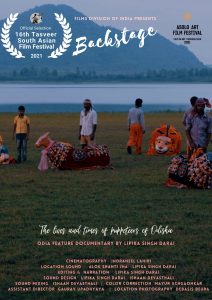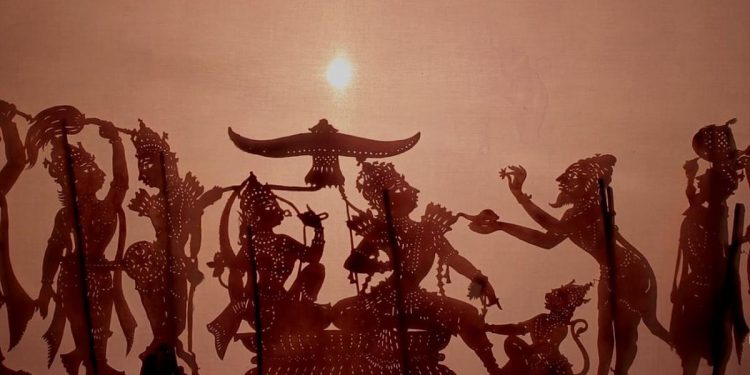Multiple national award-winning filmmaker Lipika Singh Darai’s ‘Backstage’ was lauded at the recently concluded Indian Documentary Film Festival of Bhubaneswar (IDFFB) for a reason.
The word backstage evokes in mind a kind of curiosity. It’s the sensation you get when you experience a piece of art so unique and so profound that you can’t help but wonder about the process that made it possible, the thoughts of the artists and their methods. You feel a strong urge to peek behind the curtain and witness how the proverbial bread is baked.

‘Backstage’ (2021) builds and rewards curiosity. It takes you behind the curtains, and introduces you to the constellation of characters who define the puppetry scene in Odisha. You visit the workshop of Maguni Charan Kuanr, a rod puppeteer from Keonjhar who has handcrafted out of wood some 300 puppets. You meet Gouranga Charan Dash, a scholar and a performer on a mission to preserve the art of shadow puppetry, or Ravana Chhaya. Apart from shadow and rod puppetry, present in Odisha are also traditions of string and glove puppetry. You see glove puppeteers Abhay Singh and Parameshwar Singh travel from village to village on cycles, with drum and harmonium, to perform amidst crowds.
As you meet all these characters and listen to their concerns, you come to admire Darai, the filmmaker, as a storyteller. She is neither the fly-in journalist nor the fly-on-the-wall documentarian. Her approach here can be best described as a combination of those of a researcher and a curator.
Instead of the fragmented understanding of journalists doing overnight reporting, she presents her viewers an exploration of the whole puppetry ecosystem, underlining subtly the presence of caste and privilege. Like a curator, with voiceover narration she gently leads them into the film, holding hand, but then skilfully removes herself from the narrative, only to return in the end to carefully walk them out.
The documentary takes the viewers behind the curtains, and introduces them to the constellation of characters who define the puppetry scene in Odisha
That, in the middle, elimination of self by the filmmaker, leaves the audience with the subject, puppeteers, to laugh as Maguni plays with his puppet Bhagia, an alcoholic, to ponder as Gouranga Dash, a Brahmin, examines his place in this art typically reserved for the lower castes, to contemplate as the glove puppeteers reflect on the decline in popularity of puppetry, and to grieve as Rabi Das, a shadow puppeteer who gave up his practice because of poverty, mourns the loss of his art.
As you go through all of this, you realise that it’s a tragic story, of hundreds of puppet troupes disbanding and puppeteers struggling to make a living and spread their art. Going beyond puppetry, the trend is symptomatic of the poor state of folk art, of community and participation.
But it’s not all suffering and hopelessness. Maguni stands in the middle as a beacon of positivity. He is a man so in love with his craft that he has little concern for anything else. “In the ocean of art, you can never see your footprints. And that thought has never occupied me. I just do the work,” says Maguni.






































